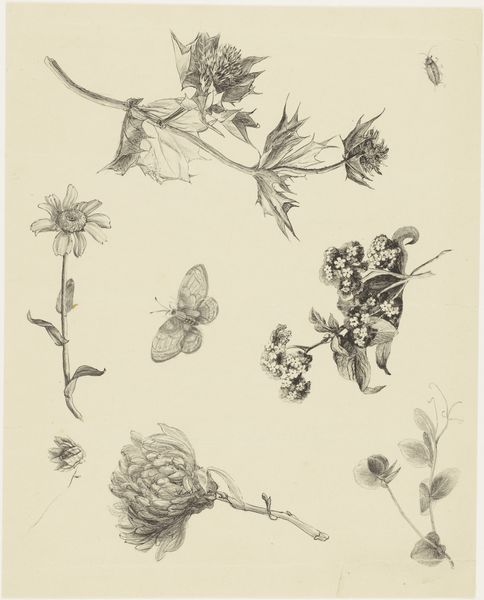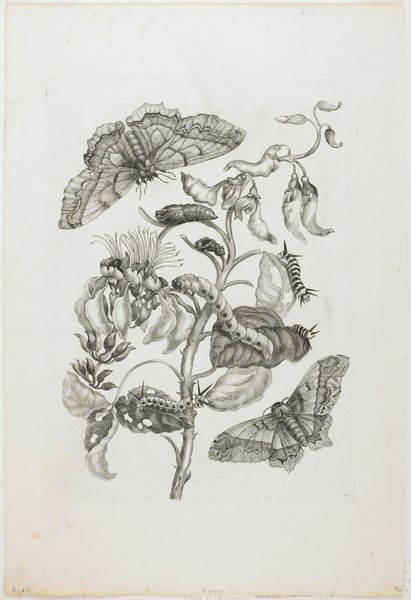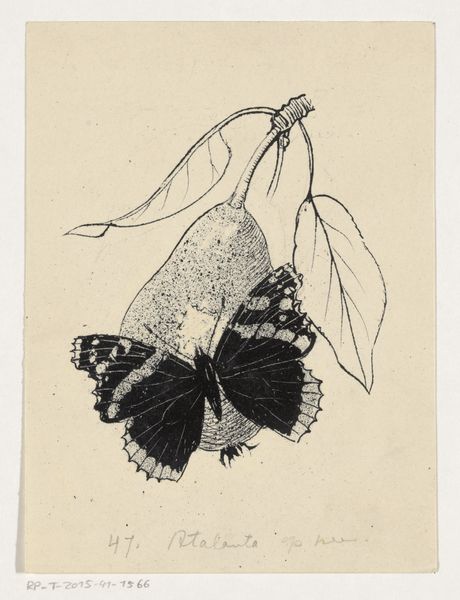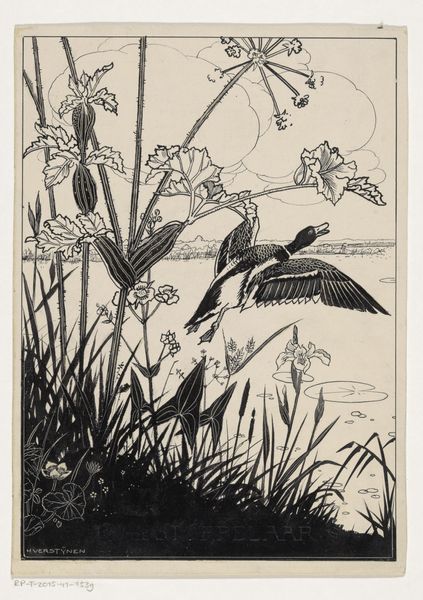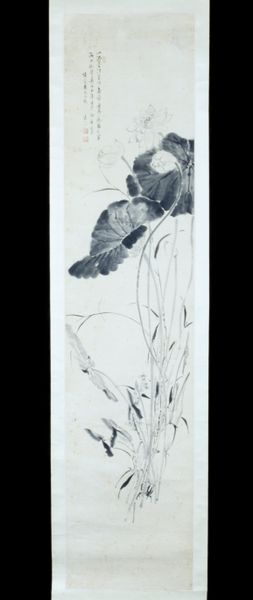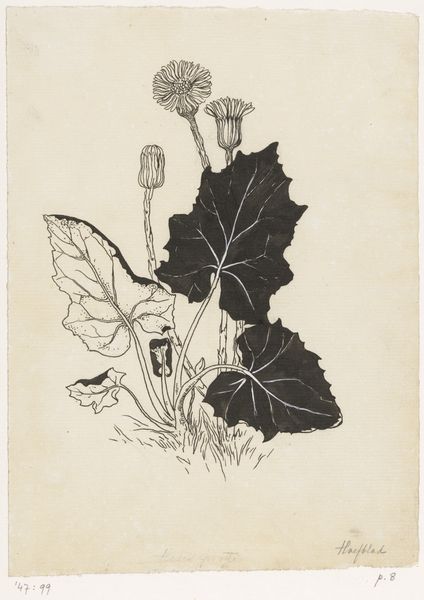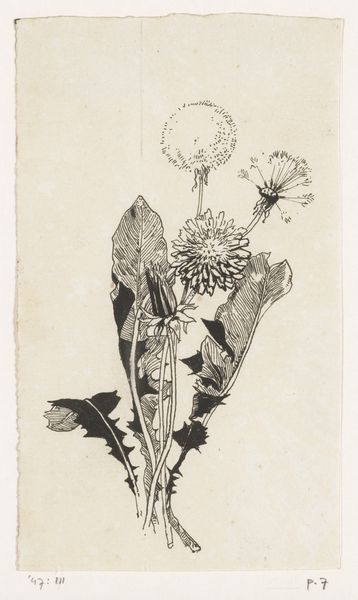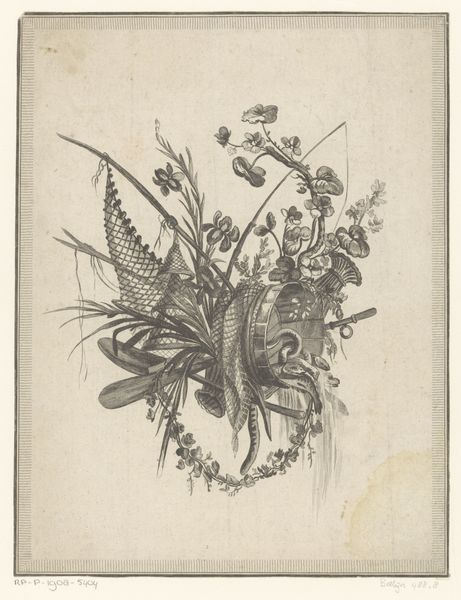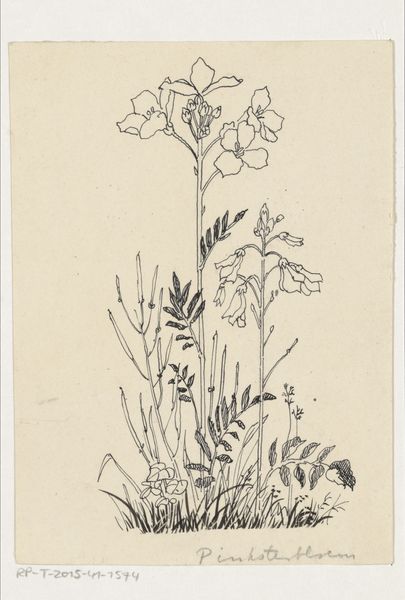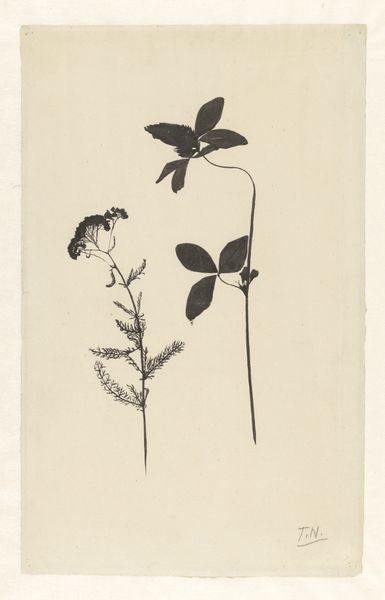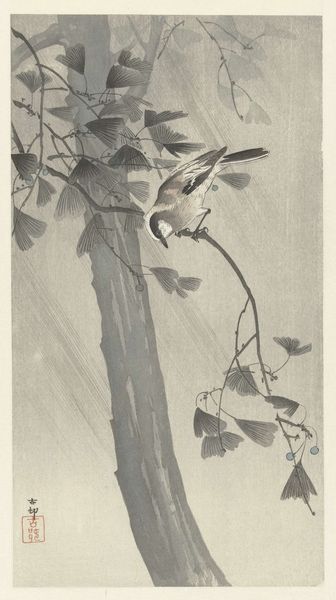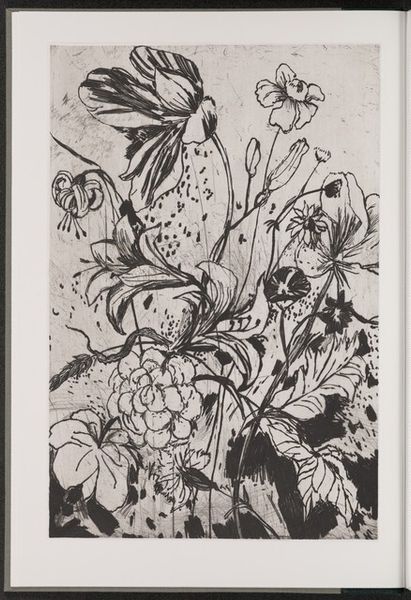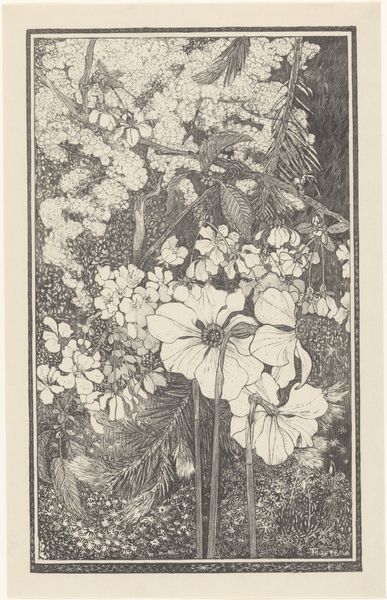
drawing, paper, ink, engraving
#
drawing
#
baroque
#
pen drawing
#
pen illustration
#
pen sketch
#
paper
#
ink line art
#
ink
#
folk-art
#
engraving
Dimensions: height 255 mm, width 196 mm
Copyright: Rijks Museum: Open Domain
Jacob l'Admiral's "Planten met vlinders en rupsen", made around the mid-18th century, employs etching—a printmaking process involving acid to cut lines into a metal plate, which is then inked and pressed onto paper. The etcher's craft is evident in the intricate detail and tonal range of the image. Look closely at the variations in line weight and density. These were achieved through meticulous control of the etching process, demonstrating the artist's skill and patience. The linear quality emphasizes the delicate structure of the plants and insects, highlighting the natural world with scientific precision. Etching was then a popular method for reproducing images and disseminating knowledge. Prints like this one played a role in the scientific study and classification of flora and fauna, reflecting the burgeoning interest in natural history during the Enlightenment. Consider the labor involved in producing such a detailed image. The process, from preparing the plate to printing the final image, would have been time-consuming, reflecting a commitment to both artistic expression and scientific accuracy. This piece is a reminder that even seemingly straightforward depictions of nature are shaped by the materials, techniques, and social contexts in which they were made.
Comments
No comments
Be the first to comment and join the conversation on the ultimate creative platform.
